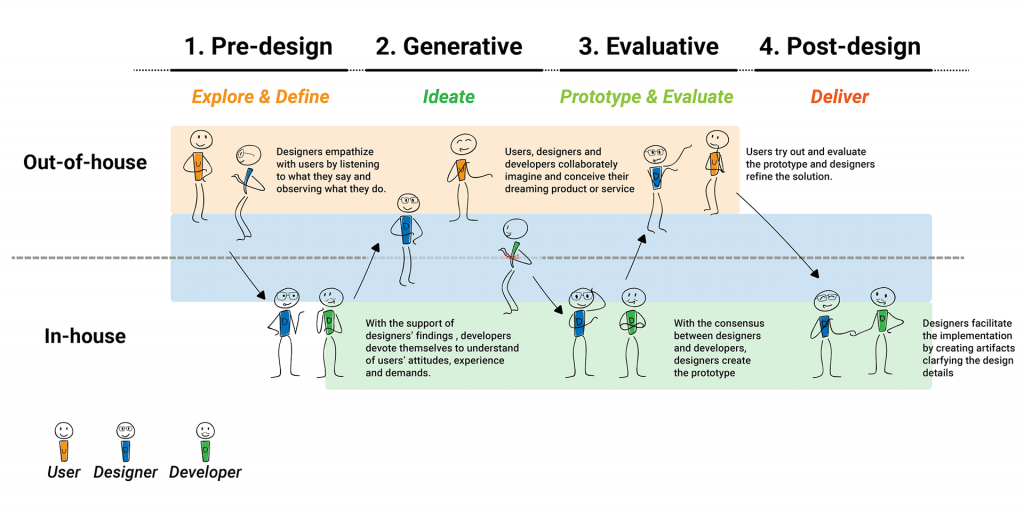UX&UI / 2018
Co-designing a Conversational User Interface for Refugees and Migrants
Responsibilities: Project Planning & Management, User Research, Concept Design, UI Design & UX Evaluation
- Users are the best experts regarding their own everyday life
- It is effective when designing for socially marginalized people
- The multicultural nature of refugees and migrants
#Design Process
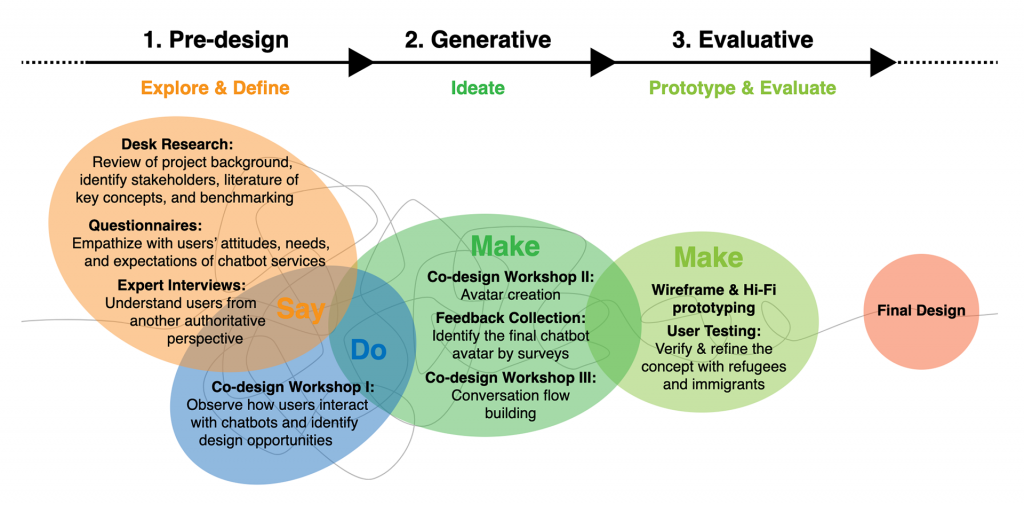
The Design Process in the ERICS project referring to Sanders, E. B. N. (2003). What people say, do and make. From user-entered to participatory design approaches. In Design and the social social sciences (pg. 21). CRC Press.
#What Users Say & Do
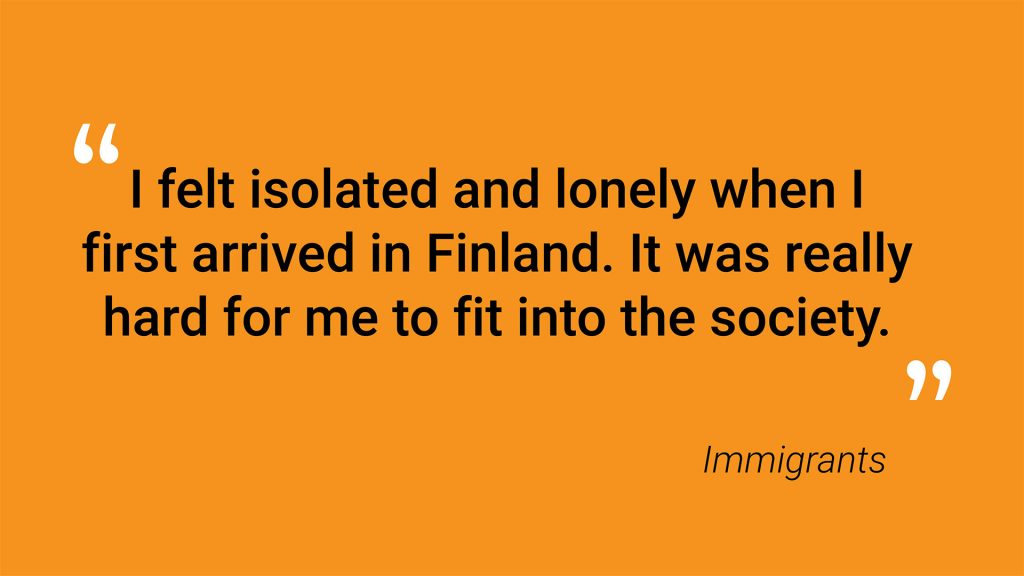
29 migrants participated in an online survey investigating the information needs during social integration.
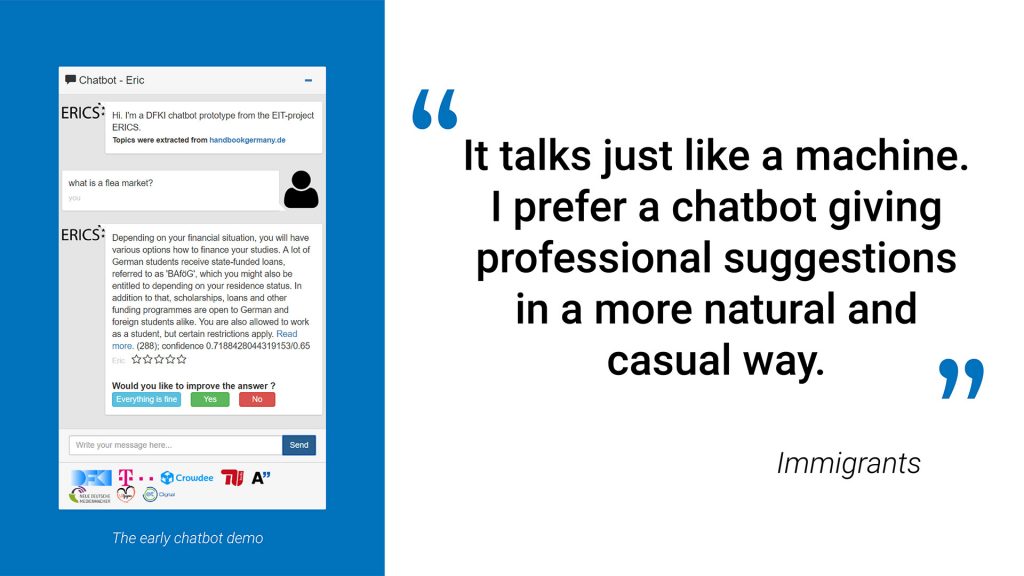
One refugee and two migrants were observed to understand how they use chatbots to understand the user behavior and their mental model.
- What constitutes an empathic chatbot avatar that is capable of motivating engagement with refugees and immigrants?
- What represents a natural conversation flow between the user and the chatbot in the context of questions answering? How can chatbots smoothly respond to all the requests from users
- How can users be encouraged to build chatbot training data by engaging in natural conversation?
#Co-Design Workshops
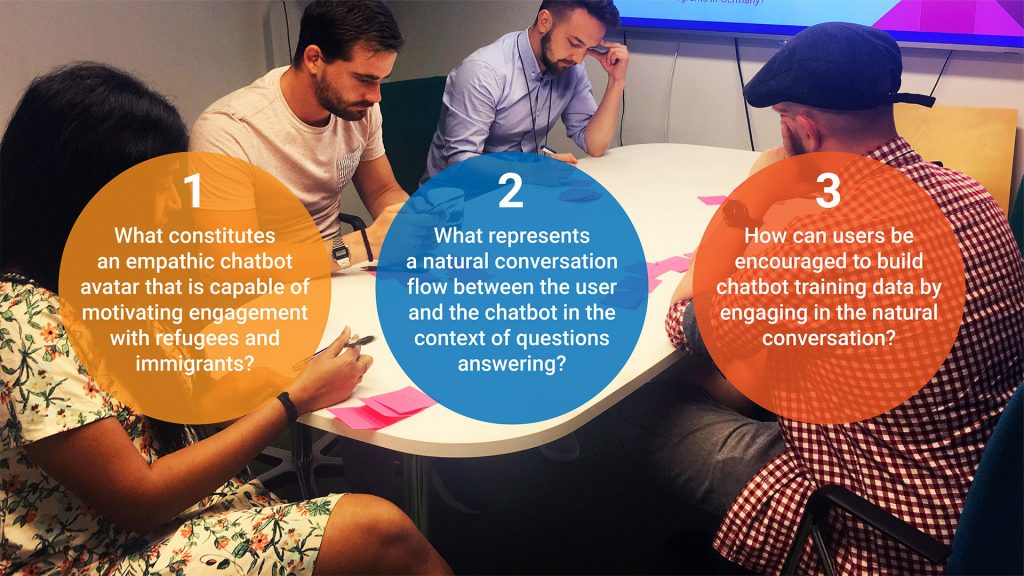
Co-design participants were brainstorming personality traits of the chatbot in the co-design workshop.
#Design Outcomes
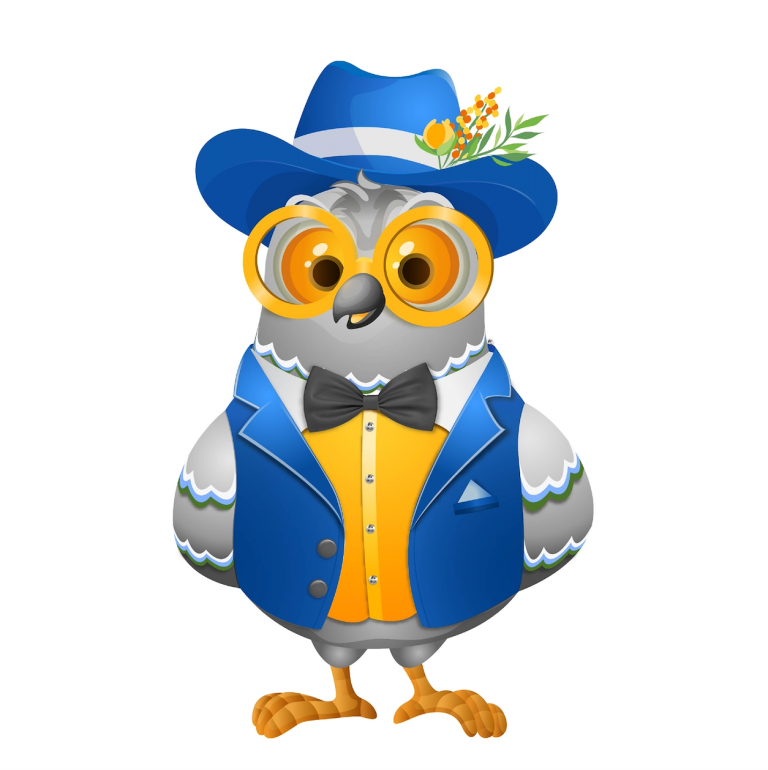
The visual embodiment of Eike the chatbot
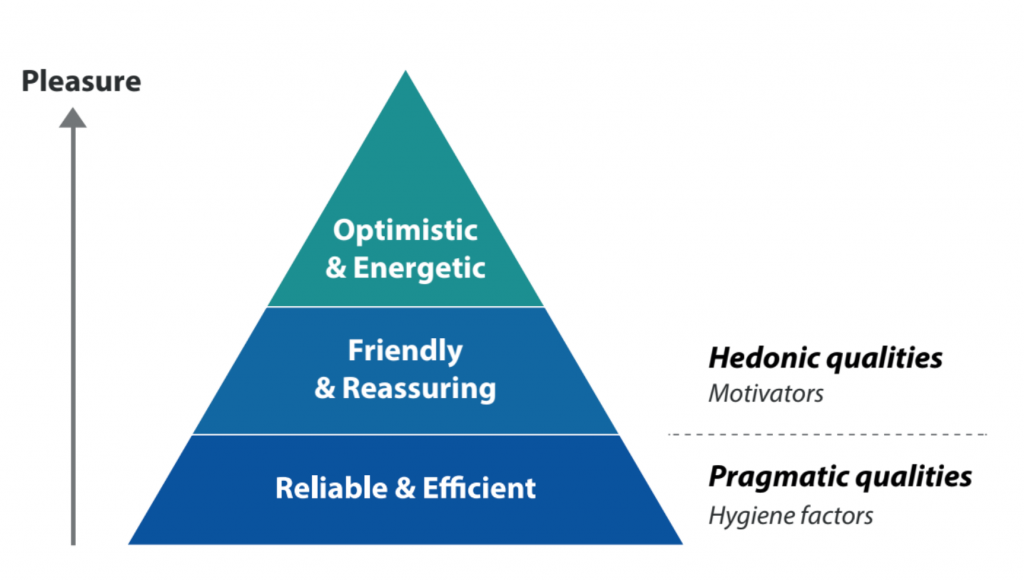
Hierarchy of defined chatbot personalities
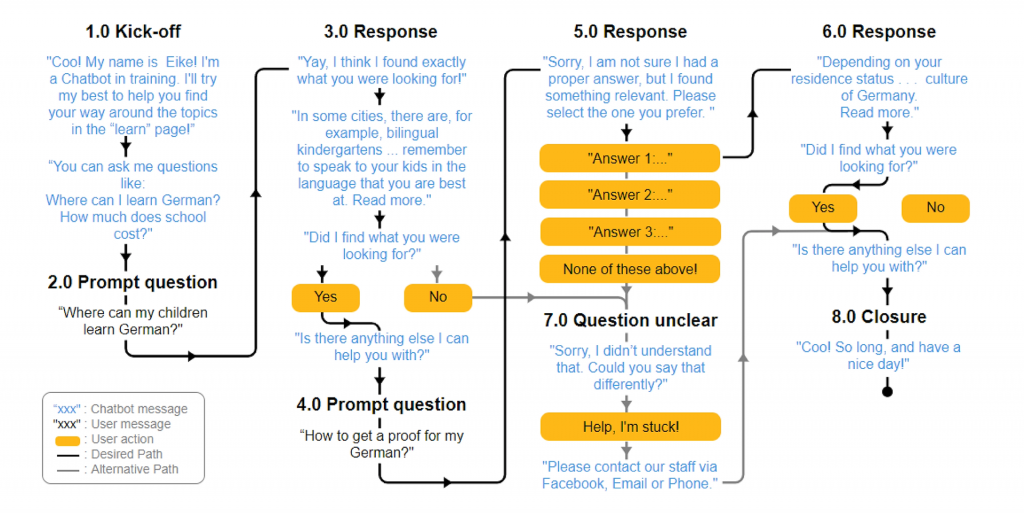
The defined conversational flows
#User Experience Evaluation

User testing happened with 17 immigrants in International House Helsinki, an effort to help immigrants start working, and Arffman Consulting, a private institution that mostly holds language and culture lessons for immigrants and refugees.
Data privacy
“It should be able to erase my chat history after closing the chat window to protect my privacy.”
Easy, short, and efficient answer delivery
“I think Eike is useless when he asks me to pick an answer and I don’t want to.”
Supportive FAQ
“It would be much easier for me to see some frequently asked questions first.”
Precise intentions for the way-out button
“I wouldn’t use the phrase “Help, I’m stuck!” as it makes me seem stupid”
#What Users Say & Do
Although the frontend developer closely works with the design team and takes part in the co-design activities (mainly in the later phases of co-design where they discuss the availability of the designed interface components and design specifications), there is still some moment of detachment.
Based on the reflection on the ERICS project, I propose an assumption of a co-design process for future research, in which users, designers, and developers jointly create a user-centered shippable solution for software products (e.g., chatbots).
